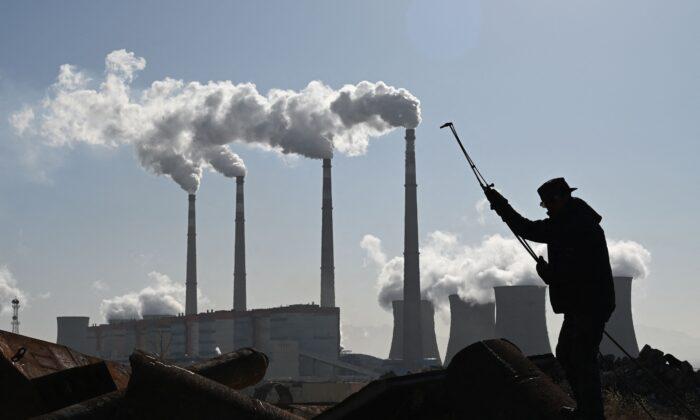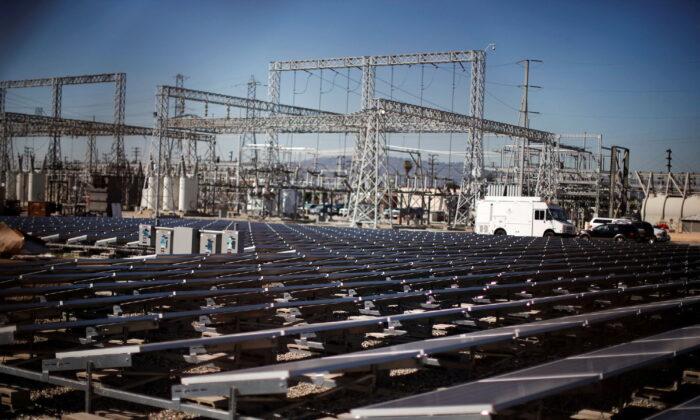“Out of 20 sodium battery factories now planned or already under construction around the world, 16 are in China, according to Benchmark Minerals, a consulting firm. In two years, China will have nearly 95 percent of the world’s capacity to make sodium batteries.”
China’s Ultra-Carbonization
Here’s a new phrase I just thought up: ultra-carbonization. This is what Communist China is doing, instead of shunning carbon energy. Also in March, NPR reported:“China permitted more coal power plants last year than any time in the last seven years, according to a new report released this week. It’s the equivalent of about two new coal power plants per week. The report by energy data organizations Global Energy Monitor and the Centre for Research on Energy and Clean Air finds the country quadrupled the amount of new coal power approvals in 2022 compared to 2021.
“That’s despite the fact that much of the world is getting off coal, says Flora Champenois, coal research analyst at Global Energy Monitor and one of the co-authors of the report.
“‘Everybody else is moving away from coal and China seems to be stepping on the gas,’ she says. ‘We saw that China has six times as much plants starting construction as the rest of the world combined.’”
“China’s economy got off to a solid start in 2023, as consumers went on a spending spree after three years of strict pandemic restrictions ended.
Not Enough US Decarbonization Workers
This is amusing. The same politicians forcing us to a premature shift from the carbon fuels that powered American’s rise also dumbed down our education system. The result, according to Wired: “The Race to Decarbonize America Needs More Workers. The US already has all the technology needed to rapidly bring down carbon emissions. The trouble is finding enough people to install it all.” It quoted Mark Paul, an environmental economist at Rutgers University:“The green transition is going to generate upwards of 25 million new jobs [in the US] in the next 15 years—this is just going to be a tremendous transformation of the US workforce. You can’t outsource the installation of heat pumps or solar panels on somebody’s roof to China or Bangladesh.”
Most of my family back in Michigan in the middle of the last century were in skilled trades, especially tool and die. Before taxes were raised on the middle class to pay for the welfare state, it was enough for a man to raise a large family on one income.
California Goes National
Gov. Gavin Newsom’s mandate of 100 percent of new vehicles sold in California being electric by 2035 is spreading. “The Biden administration is proposing rules to ensure that two-thirds of new cars and a quarter of new heavy trucks sold in the United States by 2032 are all-electric,” reported the New York Times. The paper waxed poetic in its enthusiasm:“The new rules would require nothing short of a revolution in the U.S. auto industry, a moment in some ways as significant as the June morning in 1896 when Henry Ford took his ‘horseless carriage’ for a test run and changed American life and industry.”
“Under the proposal, the EPA estimates 50% of new vocational vehicles like buses and garbage trucks could be EVs by 2032, along with 35% of new short-haul freight tractors and 25% of new long-haul freight tractors. Medium-duty vehicle rules are projected to cut emissions by 44% over 2026.”
“The Biden administration’s electric vehicle plan bets the U.S. will be able to secure enough critical minerals to electrify up to two-thirds of the nation’s new cars within less than a decade.
Conclusion
Basically, to advance Biden’s draconian new electric vehicle mandate, he’ll have to shut down the U.S. economy until Communist China produces enough processed lithium and sodium for the batteries, and the U.S. trains enough skilled tradesmen in vocational schools that don’t exist. It’s a recipe for America turning into Communist Cuba, where there are few new cars except for the bigshots. And regular people must use ancient, rickety cars held together with bailing wire.The main difference will be that Cuba’s 1950s steel cars are a lot more stylish than today’s plastic and aluminum jobs.





